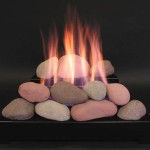Cleaning Limestone Fireplace Hearth: A Comprehensive Guide
Limestone, a sedimentary rock composed primarily of calcium carbonate, provides an elegant and timeless aesthetic to fireplace hearths. Its natural beauty and porous nature, however, also make it susceptible to staining and discoloration. Regular and proper cleaning are crucial to maintain the limestone hearth’s appearance and prevent permanent damage. This article offers a detailed guide to effectively cleaning a limestone fireplace hearth, addressing various cleaning methods and preventative measures.
Understanding the composition and properties of limestone is essential for choosing the appropriate cleaning techniques. Limestone is relatively soft compared to other stone materials, rendering it easily scratched or etched by abrasive cleaners and tools. Its porous nature also means that liquids and oils can penetrate the surface, leading to stubborn stains if not addressed promptly. Therefore, selecting gentle, pH-neutral cleaning solutions and employing non-abrasive cleaning tools is paramount.
Identifying the Type of Stain
Before commencing the cleaning process, it is crucial to identify the type of stain present on the limestone hearth. Common stains include soot and ash from fire residue, water stains, oil or grease spills, and general dirt and grime. The nature of the stain will dictate the most effective cleaning approach. For instance, soot and ash require different treatment methods than oil-based stains. Visual inspection and, in some cases, spot testing with different cleaning solutions in an inconspicuous area can help determine the nature of the stain.
Soot and ash stains are typically characterized by a dark, powdery residue. Water stains often appear as light or dark rings or spots, depending on the mineral content of the water. Oil and grease stains often manifest as dark, greasy-looking patches. General dirt and grime, on the other hand, usually present as a dull, overall discoloration of the limestone surface. Accurate stain identification ensures that the right cleaning agents are used, maximizing cleaning efficiency and minimizing the risk of damage.
Cleaning Methods for Limestone Hearth
Several cleaning methods can be employed to effectively clean a limestone fireplace hearth, ranging from simple daily maintenance to more intensive stain removal techniques. The choice of method depends on the severity of the staining and the type of stain identified.
Daily Maintenance: Routine dusting and sweeping are essential for preventing the buildup of dust, soot, and other debris on the limestone hearth. A soft-bristled brush or vacuum cleaner with a brush attachment can be used for this purpose. This regular maintenance minimizes the amount of dirt that can potentially penetrate the porous surface and cause staining.
General Cleaning: For regular cleaning, a solution of warm water and a pH-neutral stone cleaner is recommended. Avoid using acidic cleaners like vinegar or lemon juice, as they can etch and damage the limestone surface. Apply the cleaning solution to the hearth using a soft cloth or sponge, gently wiping the surface to remove dirt and grime. Rinse the area thoroughly with clean water and dry it with a clean cloth. Ensure that no residue of the cleaning solution remains on the limestone surface.
Soot and Ash Removal: To remove soot and ash, begin by carefully vacuuming the affected area with a brush attachment. Then, create a paste of baking soda and water. Apply the paste to the stained area and allow it to sit for several minutes. Gently scrub the paste with a soft-bristled brush, then rinse thoroughly with clean water and dry with a clean cloth. Repeat the process if necessary. Baking soda is a mild abrasive that helps lift soot and ash without damaging the limestone surface.
Oil and Grease Stain Removal: Oil and grease stains can be challenging to remove from limestone. One effective method is to create a poultice using a mixture of baking soda or diatomaceous earth and a solvent such as acetone or mineral spirits. The poultice is applied to the stain, covered with plastic wrap, and left to sit for 24-48 hours. The solvent draws the oil or grease out of the limestone, and the baking soda or diatomaceous earth absorbs it. After the poultice has dried, it is carefully removed, and the area is rinsed with clean water and dried with a clean cloth. Multiple applications may be necessary for stubborn stains. Always work in a well-ventilated area when using solvents.
Water Stain Removal: Water stains can often be removed with a solution of distilled water and a pH-neutral stone cleaner. Apply the solution to the stained area, allow it to sit for a few minutes, and then gently wipe it with a clean cloth. Rinse thoroughly with clean water and dry with a clean cloth. For more persistent water stains, a poultice made from baking soda and water may be necessary.
Preventative Measures for Limestone Hearth
Preventing stains is always easier than removing them. Several preventative measures can be implemented to protect the limestone hearth from staining and damage.
Sealing: Applying a penetrating stone sealant to the limestone hearth creates a protective barrier that helps prevent liquids and oils from penetrating the surface. A sealer specifically designed for natural stone should be used, and the application instructions should be followed carefully. Reapply the sealant periodically, as recommended by the manufacturer, to maintain its effectiveness.
Prompt Spill Cleanup: Immediately clean up any spills that occur on the limestone hearth. The longer a spill sits, the more likely it is to penetrate the porous surface and cause a stain. Use a clean cloth to blot the spill, working from the outside in to prevent it from spreading. Avoid rubbing the spill, as this can push it deeper into the limestone.
Using a Fireplace Screen: A fireplace screen can help prevent soot and ash from reaching the limestone hearth. The screen acts as a barrier, containing sparks and embers and reducing the amount of soot that escapes into the room.
Regular Maintenance: Consistent dusting and sweeping, as described earlier, are crucial for preventing the buildup of dirt and grime that can lead to staining. Regular cleaning helps maintain the limestone hearth's appearance and prevents the need for more intensive cleaning methods.
By implementing these cleaning methods and preventative measures, the limestone fireplace hearth can retain its beauty and elegance for years to come, providing a warm and inviting focal point for any living space.

How To Clean A Limestone Fireplace

4 Important Tips For Cleaning Your Limestone Fireplace
Best Way To Clean And Seal Limestone Hearth Before Use Com Forums Home

Hearth Cleaning Archives Oxfordshire Tile Doctor

How To Clean A Limestone Fireplace Stamford Stone At Home

Maintenance Tips For Your Limestone Fireplace Surround Direct Fireplaces

Fireplace Cleaning Nottinghamstonecleaning

How To Clean Your Limestone Fireplace

Removing Stains From A Limestone Fireplace Hearth In Chelmsford Stone Cleaning And Maintenance

How To Clean Your Fireplace Surrounds Rotherham Centre








